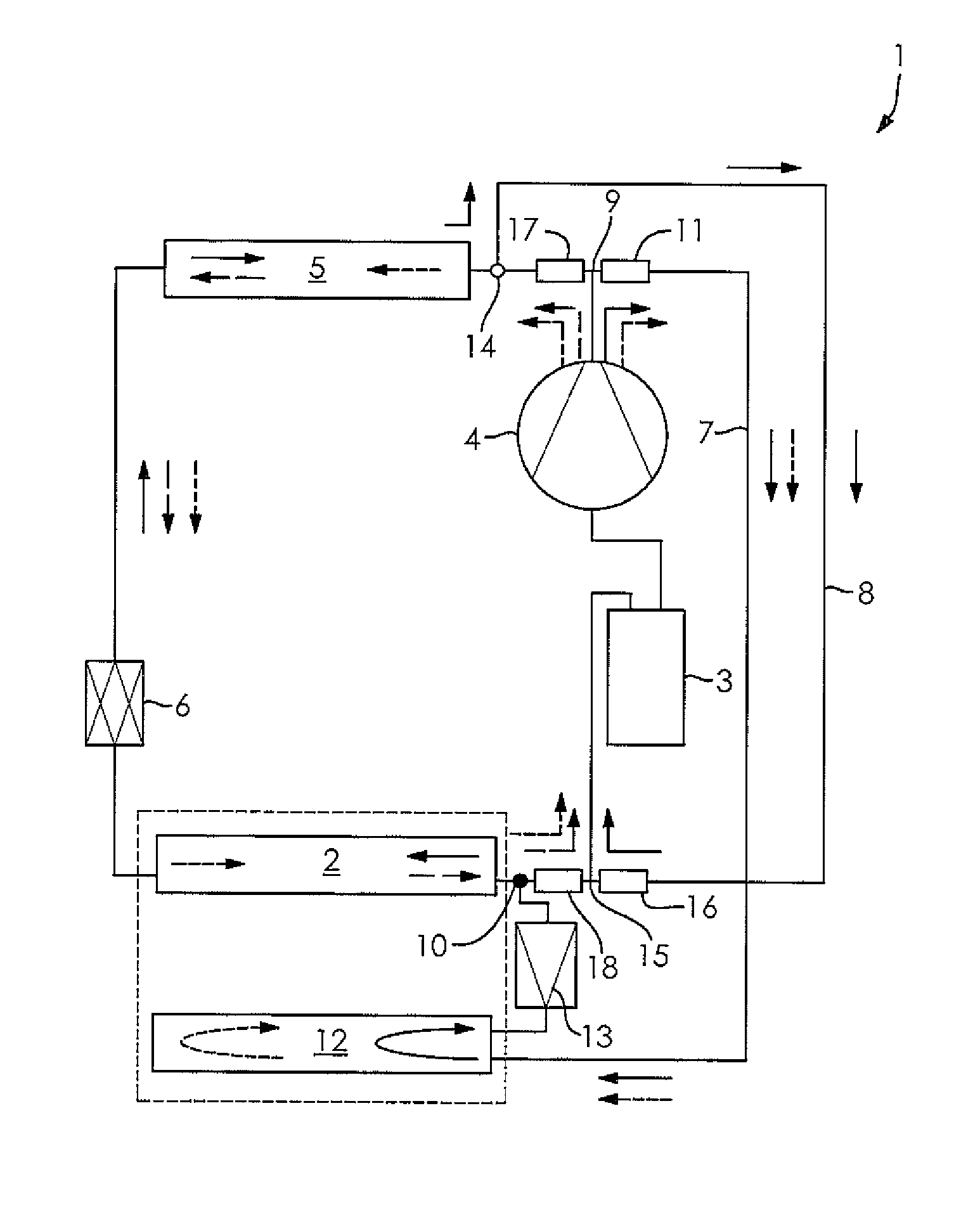Refrigerant circuit of an air conditioner with heat pump
a technology of refrigerant circuit and air conditioner, which is applied in the direction of domestic cooling apparatus, lighting and heating apparatus, and cooling fluid circulation, etc., can solve the problems of not meeting the required level, heat pump systems that cannot dehumidify and heat the air supplied to the passenger compartment at the same time, and cannot be operated at low ambient temperatures with surrounding air, etc., to achieve adequate dehumidification of the intake air for the passenger compartment, sufficient heating power, and reduced power
- Summary
- Abstract
- Description
- Claims
- Application Information
AI Technical Summary
Benefits of technology
Problems solved by technology
Method used
Image
Examples
Embodiment Construction
[0037]The following detailed description and appended drawings describe and illustrate various exemplary embodiments of the invention. The description and drawings serve to enable one skilled in the art to make and use the invention, and are not intended to limit the scope of the invention in any manner. In respect of the methods disclosed, the steps presented are exemplary in nature, and thus, the order of the steps is not necessary or critical.
[0038]FIG. 1 shows a refrigerant circuit 1 of the vehicle's air conditioning system with a primary circuit and a secondary line or circuit. During operation in the cooling unit mode, the refrigerant flows through the primary circuit in succession through the heat exchanger 2, operated as an evaporator, the collector 3, the compressor 4, the heat exchanger 5 operated as a condenser / gas cooler, and the expansion element 6 configured as an expansion valve with bidirectional flow. The direction of flow of the refrigerant is shown here by means o...
PUM
 Login to View More
Login to View More Abstract
Description
Claims
Application Information
 Login to View More
Login to View More - R&D
- Intellectual Property
- Life Sciences
- Materials
- Tech Scout
- Unparalleled Data Quality
- Higher Quality Content
- 60% Fewer Hallucinations
Browse by: Latest US Patents, China's latest patents, Technical Efficacy Thesaurus, Application Domain, Technology Topic, Popular Technical Reports.
© 2025 PatSnap. All rights reserved.Legal|Privacy policy|Modern Slavery Act Transparency Statement|Sitemap|About US| Contact US: help@patsnap.com


